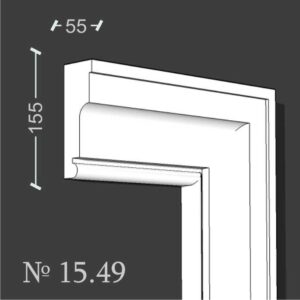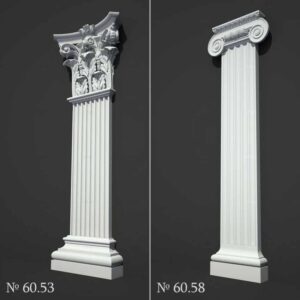Embracing a white color scheme in your living space can bring a sense of modern elegance and timeless beauty. This approach to home design not only brightens the room but also offers a versatile canvas for expressing personal style. In this exploration of white living room decor, we delve into the ways this color choice can enhance the atmosphere of your home, making it a haven of tranquility and contemporary charm.
Reviving Tradition with White Living Room Elegance




The realm of interior design often circles back to classic themes, reinvented with a contemporary twist. Among these, the concept of using white in living room decor stands out for its ability to breathe new life into traditional spaces. When one imagines a traditional living room, visions of rich colors, heavy fabrics, and ornate details often come to mind. However, introducing white decor elements into such a space can transform it into a haven of modern elegance and timeless beauty.
Incorporating white into a traditional living room is a journey of balancing old and new. The use of classic furniture pieces, perhaps with rich wooden frames or vintage designs, creates a historical anchor in the room. When these pieces are accented with white—be it through paint, upholstery, or accessories—they gain a fresh, modern look while retaining their traditional charm. White draperies can add to this effect, providing a backdrop that is both elegant and understated. The beauty of white is its versatility; it can be warm or cool, bold or subtle, depending on its surroundings.
This fusion of traditional and modern can also be achieved through wall treatments and flooring. A white palette on the walls offers a clean canvas, allowing the architectural details and heritage pieces to stand out. Hardwood floors, perhaps in a darker hue, can create a striking contrast with the white decor, emphasizing the blend of eras.




But it’s not just about the visual impact. White decor in a traditional living room also affects the ambiance of the space. It brings a sense of calm and clarity, making the room feel more open and airy. This is particularly beneficial in homes with smaller living spaces, where white can create an illusion of spaciousness.
To further enhance this traditional yet modern living room, subtle color contrasts and textures can be introduced. Soft pastel accents or metallic touches in light fixtures and decorative items can add depth and interest without overpowering the white theme. Textures play a crucial role too; incorporating different materials like wood, metal, or glass can add layers to the design, making the space more dynamic and inviting.
In essence, reviving tradition with white living room decor is about striking a balance. It’s about honoring the past while embracing the present, creating a space that is both familiar and refreshingly new. It’s a testament to the enduring appeal of white in interior design, and how it can transform a traditional space into a modern masterpiece.
White Living Room Decor Meets Bohemian Chic




When the crisp, clean lines of white decor meet the eclectic, free-spirited nature of bohemian style, a unique and captivating living room aesthetic is born. This fusion brings together the best of both worlds – the serenity and simplicity of white with the vibrant and artistic flair of bohemian design. The result is a living space that is both calming and exciting, minimalist yet expressive.
The bohemian style is known for its rich textures, varied patterns, and a mix of colors and materials. In a white-themed living room, these elements can be introduced in a way that complements rather than overwhelms the space. Textured white throw pillows, for example, can add depth and interest to a sofa or chair, while airy white curtains can soften the room’s edges and let in natural light.
The key to successfully merging white decor with bohemian chic lies in the art of layering and accessorizing. Eclectic accessories, such as vintage finds, global artifacts, and handmade items, can be strategically placed to add personality and warmth. These pieces, when set against a white backdrop, stand out even more, their stories and origins becoming focal points in the room.




Furniture in a white and bohemian living room can be a mix of modern and vintage, with an emphasis on natural materials like wood and rattan. A white sofa can serve as a blank canvas, dressed up with colorful throw pillows and blankets featuring bohemian patterns. A vintage wooden coffee table, perhaps with a distressed finish, can add a sense of history and character.
The beauty of this style lies in its flexibility and the personal touch it allows. The white decor acts as a unifying base, bringing a sense of cohesion to the diverse elements of bohemian style. This allows for an ever-evolving space that can be updated with new finds and personal treasures, making the living room a true reflection of the inhabitants’ tastes and experiences.
Moreover, a white and bohemian chic living room is not just visually appealing; it’s a sensory experience. The various textures and materials invite touch, the patterns and colors offer visual stimulation, and the overall ambiance encourages relaxation and creativity. It’s a space that feels alive, constantly evolving, and deeply personal.
In summary, blending white living room decor with bohemian chic creates a space that is both tranquil and dynamic. It’s a testament to the power of white to provide a foundation for creative expression, and to the enduring charm of bohemian style in creating a space that is truly one-of-a-kind.
Minimalist White Living Room Design for the Modern Home




Minimalism, characterized by its clean lines, uncluttered spaces, and a monochromatic palette, finds its perfect expression in the modern home through white living room decor. This design philosophy transcends mere aesthetics, embodying a lifestyle that values simplicity, functionality, and tranquility. A minimalist white living room is not just a space; it’s a reflection of a serene and unburdened approach to life.
At the heart of minimalist design is the concept of ‘less is more.’ This principle is beautifully showcased in a white living room, where every element is carefully chosen for its functionality and aesthetic value. The color white itself is pivotal in achieving this minimalist look. It creates a sense of spaciousness and light, making the room feel larger and more open. This is particularly beneficial in urban homes, where space can be at a premium.
Furniture in a minimalist white living room should be sleek and simple, with clean lines and a lack of ornate details. A white sofa with a streamlined design can serve as the centerpiece, complemented by a low, unobtrusive coffee table. Shelving and storage should be minimal, perhaps built into the walls to maintain the room’s clean lines. The key is to avoid clutter; every item should have a purpose and a place.




The color scheme in a minimalist living room is predominantly white, but it doesn’t have to be stark or cold. Different shades of white and subtle contrasts can add warmth and texture. For instance, a creamy white rug can add softness underfoot, while off-white or pale gray cushions can provide a gentle contrast on a bright white sofa.
Art and decoration in a minimalist white living room should be thoughtfully selected. Rather than filling the space with numerous items, a few key pieces can make a strong statement. A single large artwork, perhaps in a monochromatic scheme or with minimal color, can serve as a focal point. Decorative items should be kept to a minimum, with a focus on quality over quantity.
Lighting plays a crucial role in a minimalist living room. Natural light should be maximized, with sheer curtains or blinds allowing sunlight to filter in. For artificial lighting, simple, elegant fixtures that complement the room’s clean lines are ideal. Recessed lighting or a sleek floor lamp can provide ambient lighting without taking up visual space.
The minimalist white living room is not just about visual appeal; it’s about creating a peaceful and harmonious environment. The lack of clutter and the simplicity of the design can have a calming effect, making the living room a sanctuary from the hustle and bustle of the outside world. This design choice reflects a mindful approach to living, where every object is chosen with care, and the space is designed to promote tranquility and well-being.
In conclusion, a minimalist white living room is a perfect embodiment of modern design principles. It combines the purity and simplicity of the color white with a minimalist approach to create a space that is both functional and aesthetically pleasing. It’s a testament to the enduring appeal of minimalism and the versatility of white as a cornerstone of interior design.
The versatility of white in living room decor is unmatched, offering a foundation for various design styles from traditional elegance to bohemian chic and minimalist modernity. By incorporating white elements into your living space, you invite a sense of calm, purity, and flexibility into your home. This approach to interior design not only creates an inviting and stylish atmosphere but also serves as a canvas for personal expression and evolving tastes. As we have seen, white living room decor is a timeless choice that can effortlessly adapt to any home, offering a perfect blend of tranquility and modern aesthetics.












